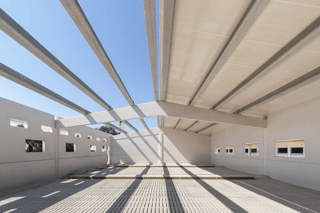Noise affects people's well-being and has important consequences on their health. Noise insulation of buildings eliminates the disturbance caused by common impact noise as well as airborne noise. Improving the sound insulation of buildings is therefore essential to their health.
The correct installation of insulation systems for soundproofing buildings also makes it possible to comply with noise protection regulations.

What is building sound insulation?
In order to achieve more comfortable interior spaces on an acoustic level, it is necessary to control the openings in the enclosure, as well as the ambient sound waves that surround the building. We must also take into account the internal compartments, such as partitions and floors, as well as checking for cracks or fissures that could cause infiltration.
On the other hand, drainage and ventilation ducts, chimneys, bathtubs, beams and pillars can generate noise or favour its transmission. The same applies to sockets, light holes, switches, etc. It is therefore necessary to cover these elements with insulating material and to seal the existing holes.
Which building elements can be soundproofed?
A wide variety of insulation materials are available on the market, such as fibreglass, rock wool, expanded polystyrene (EPS), extruded polystyrene (XPS), cellular glass, phenolic, elastomeric and polyurethane foams.
Polyurethane injected into the existing air gap is an excellent solution for the acoustic insulation of facades. On the other hand, some sprayed polyurethane systems will be indicated for the acoustic insulation of floors and slabs.
The polyurethane foam, by forming a continuous layer of high adherence, without joints or overlaps, is very effective for sealing doors, windows and sanitation.

How can the sound insulation of an existing building be improved?
The great sealing capacity of polyurethane is responsible for its acoustic properties, not only in homes in urban environments, but also in areas with high noise levels such as discotheques, cafes, factories or those places with air traffic. Due to its structure, it effectively absorbs noise and insulates buildings.
The optimum foam for sound insulation of buildings is open-cell foam. It can be applied to floors, partitions and ceilings to achieve complete acoustic comfort.











